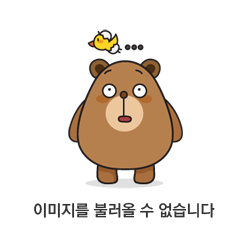
In today’s rapidly evolving digital landscape, the fusion of technology and creativity has ushered in a revolutionary tool for designers and creatives alike: AI image generation. This groundbreaking technology is not just changing the way we think about design; it’s democratising creativity, allowing both seasoned professionals and novices to produce stunning visuals with relative ease. In this article, we’ll dive deep into the world of AI image generation, exploring how you can harness this technology to elevate your design projects.
Understanding AI Image Generation
AI image generation refers to the use of artificial intelligence algorithms to create images, graphics, and illustrations. This technology leverages machine learning models trained on vast datasets of images, learning patterns, styles, and techniques. The result is an AI that can generate unique, high-quality visuals based on a set of parameters or prompts you provide.
One of the remarkable aspects of AI-generated images is their diversity and adaptability. Whether you’re looking to create abstract art, realistic photos, product prototypes or animation, AI has the capability to bring your vision to life.
The Perks of Using AI in Design
Infinite Creativity at Your Fingertips
The foremost advantage of AI in design is the boundless creativity it offers. With traditional design tools, you’re often limited by your skill set or the functionalities of the software. AI, however, can generate innovative and complex visuals that might be beyond the scope of manual creation.
Time and Cost Efficiency
Design projects can be time-consuming and costly, especially when revisions and iterations come into play. AI can streamline this process, producing variations and alternatives at a fraction of the time it would take a human designer. This rapid prototyping capability is invaluable for tight deadlines and budget constraints.
Access for All Skill Levels
AI image generation is not just for the tech-savvy or design professionals. With intuitive interfaces and user-friendly platforms, anyone can experiment with AI to create impressive visuals. This democratization of design tools means more individuals can participate in creative processes, irrespective of their technical background.
How to Get Started with AI Image Generation
Diving into AI image generation is surprisingly straightforward. Here’s a step-by-step guide to get you started:
Choose Your AI Design Tool
Several AI image generation tools are available, each offering different features and capabilities. Popular options include DALL·E by OpenAI, Artbreeder, and DeepDream. Research and select a platform that suits your needs, considering factors like ease of use, customization options, and output quality.
Understand the Interface and Features
Before creating your first AI-generated image, familiarize yourself with the tool’s interface and features. Look into tutorials or guides provided by the platform. Understanding the fundamentals will help you fully exploit the technology’s capabilities.
Specify Your Prompts Clearly
Success with AI image generation often hinges on how effectively you can communicate your vision to the AI. This typically involves inputting text prompts, choosing styles, or selecting base images. The clearer and more descriptive your prompts, the closer the output will match your expectations.
Experiment and Iterate
One of the joys of working with AI is the opportunity to experiment freely without the constraints of time or materials. Don’t hesitate to try different prompts or tweak parameters. Each iteration will teach you more about how the AI interprets instructions and how you can refine your inputs for better outcomes.
Ethical Considerations and Best Practices
As with any powerful tool, it’s essential to use AI image generation responsibly. Here are some tips to ensure ethical usage and respect for copyright:
- Originality: Always strive to create original content. Avoid replicating specific artworks or images without permission, especially when intending to use the output commercially.
- Attribution: If your design is heavily inspired by or based on another artist’s work, give proper credit.
- Respect Privacy: Be cautious not to incorporate identifiable features of individuals without their consent in your AI-generated images.
- Fair Use: Understand the boundaries of fair use, especially when integrating AI imagery into commercial projects.
The Future of AI in Design
As AI technology continues to evolve, its implications for the design world are boundless. We can anticipate further improvements in customization, rendering quality, and interaction with human creators. Moreover, as the technology becomes more accessible, we will likely see an explosion of creative output, marked by diversity and innovation.
AI image generation represents a new frontier in design, offering a blend of art and technology that fuels unprecedented levels of creativity and efficiency. By understanding and embracing this tool, you can unlock a world of possibilities, transforming the way you conceptualize and execute your design projects.
Harness the power of AI to break new creative ground, but remember, the technology serves best as an extension of human imagination. The true essence of design lies in the unique perspective each creator brings to the table, with AI acting as a powerful collaborator in bringing these visions to life.
'Tech' 카테고리의 다른 글
| Unbreakable: The Top 5 Recovery Software Tools for Data Protection (0) | 2024.02.23 |
|---|---|
| Driving Change: How Online Transport is Reshaping the Way We Travel (1) | 2024.02.21 |
| Cruise Control: Simplifying Online Car Transport for Savvy Shippers (0) | 2024.02.21 |
| Breaking Barriers: The Diversity of AI Applications (0) | 2024.02.21 |
| Beyond Uber: Revolutionizing Online Transport Services (0) | 2024.02.21 |